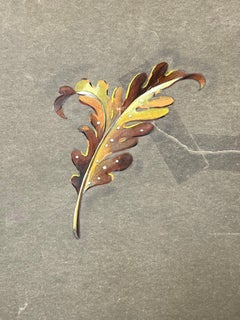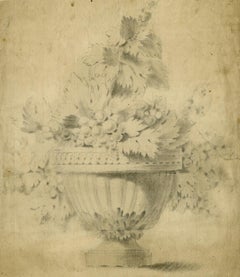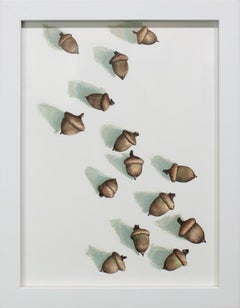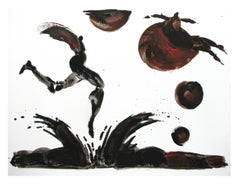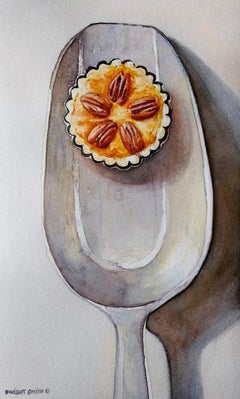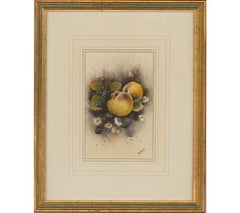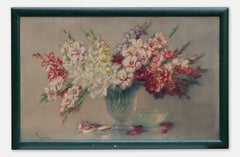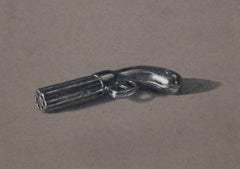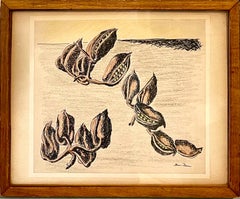Nut Drawings and Watercolor Paintings
Mid-20th Century French School Still-life Drawings and Watercolors
Watercolor, Gouache, Pencil
Late 18th Century French School Still-life Drawings and Watercolors
Laid Paper, Pencil
2010s Other Art Style Drawings and Watercolor Paintings
Paper, Pen, Permanent Marker
2010s Contemporary Drawings and Watercolor Paintings
Pen
Artist Comments
"My wife has been baking pecan pies for the holiday season," shares artist Dwight Smith," which inspired me to paint the still life. I love the warm colors of...
21st Century and Contemporary American Realist Still-life Drawings and W...
Watercolor
21st Century and Contemporary Still-life Drawings and Watercolors
Watercolor
1990s Drawings and Watercolor Paintings
Watercolor
2010s Conceptual Landscape Drawings and Watercolors
Archival Ink, Watercolor, Archival Paper
Late 19th Century Impressionist Still-life Drawings and Watercolors
Gouache
21st Century and Contemporary Realist Figurative Drawings and Watercolors
Gouache, Graphite, Paper
1950s Post-Modern Still-life Drawings and Watercolors
Watercolor, Laid Paper
1920s Fauvist Still-life Drawings and Watercolors
Paper, Watercolor, Gouache
21st Century and Contemporary Naturalistic Still-life Drawings and Water...
Gesso, Paper, Watercolor, Gouache
Late 20th Century Still-life Paintings
Silk, Watercolor, Handmade Paper, Gouache
Mid-20th Century Contemporary Nude Drawings and Watercolors
Pen, Pencil
1930s Realist Drawings and Watercolor Paintings
Watercolor
21st Century and Contemporary Contemporary Interior Drawings and Waterco...
Paper, Ink, Watercolor, Gouache, Pen
1970s Modern Still-life Drawings and Watercolors
Paper, Gouache
1950s Post-Impressionist Still-life Paintings
Watercolor, Laid Paper, Graphite
1920s Realist Figurative Drawings and Watercolors
Paper, Watercolor, Ink, Gouache
Mid-20th Century Expressionist Still-life Drawings and Watercolors
Paper, Oil Crayon, Pastel, Ink
Read More
This Tempting Wayne Thiebaud Watercolor Is the Perfect Summer Treat
Although he also produced pensive portraits and idyllic landscapes, the artist’s best-known images are of ice cream, cakes and other colorful sweets.
In This Surreal Painting, the Pink Foot of Patriarchy Squashes a Pumpkin Worshipped by Women
In ‘Gourd,’ Isabel Rock creates a mythic scene that looks fresh and contemporary but feels as old as Eden.
Mid-Century Americans Didn’t Know Antonio Petruccelli’s Name, but They Sure Knew His Art
The New York artist created covers for the nation’s most illustrious magazines. Now, the originals are on display as fine art.
Cecilia Vicuña Merges Politics, Science and Spirituality in Her Poetic Art
The Chilean creator, who has been living in exile in New York for decades, is having a major moment, receiving the biggest exhibitions, commissions and awards an artist could dream of.
Who Are the Most Popular Artists on 1stDibs?
Learn the stories of some of the world's most recognizable artworks and their makers.
Shantell Martin Finds Wonder in Sharing the Creative Process
The visual artist completed a new work in front of a crowd at the 1stdibs Gallery.
